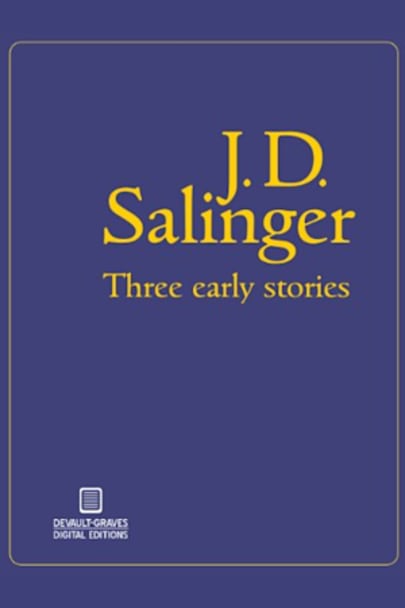A young and ambitious writer named Jerome David Salinger set his goals very high very early in his career. He almost desperately wished to publish his early stories in The New Yorker magazine, the pinnacle, he felt, of America’s literary world. But such was not to be for several long years and the length of one long world war. The New Yorker, whose tastes in literary matters were and remain … notoriously prim and fickle, was not quite ready for this brash and over-confident newcomer with the cynical worldview and his habit of slangy dialogue.
But other magazines were quick to recognize a new talent, a fresh voice at a time when the world verged on madness. Story magazine, an esteemed and influential small circulation journal devoted exclusively to the art of the short story and still active and respected today, was the first publication to publish the name J.D. Salinger and the story “The Young Folks” in 1940, an impressive view of New York’s cocktail society and two young people talking past one another, their conversation almost completely meaningless and empty.
His next short story was published in a college journal, The University of Kansas City Review, “Go See Eddie,” a tale of quiet menace as an unsavory male character gradually turns up the pressure on a young lady to see a man named Eddie. Also published in 1940, the story is notable for the backstory that is omitted – a technique that Hemingway used to great effect.
Four years later toward the end of Salinger’s war experience saw the publication of “Once A Week Won’t Kill You,” again in Story magazine. Ostensibly about a newly minted soldier trying to tell an aging aunt he is going off to war, some may see the story as a metaphor for preparing one’s family for the possibility of wartime death.
Three Early Stories is the first legitimately published book by J.D. Salinger in more than 50 years. Devault-Graves Digital Editions, a publisher that specializes in reprinting the finest in American period literature, is proud to bring you this anthology by one of America’s most innovative and inspiring authors.
more



Here’s a very fun little book with an amazing back story. Of course, J.D.Salinger is most widely known for The Catcher in the Rye, but following that novel, his true writing passion became following the separate (and collective) stories of his fictional Glass family. Many of these were not well received by critics, culminating in the disastrous reviews for his story Hapworth 16 1924 (The New Yorker, 1965). Following this unkind reception, JDS concluded that publication in general was a horrific invasion of his privacy, and he never published again. Which does not at all mean to suggest that he quit writing. One of the funnest topics in literature is imaging what manuscripts exist in the private JDS vault presumably in Cornish New Hampshire. And the follow-on question, of course is, “When will his estate begin publishing those volumes?” Well, here’s a collection that jumped the gun on all that. Somehow, via public domain laws or some such, an ambitious publishing concern managed to acquire and publish (as the name clearly states) three of JDS earliest stories. I’m guessing the estate is none too hot on this development, but here it is nonetheless. Out there is out there, and forever.
What can these early stories tell us about JDS? Simple: his skillset was already well underway, even from the very onset. Not particularly encouraging news to us late-blooming writers hoping for a supernatural competency bump coalescing inside our brains somewhere over the back nine of life.
All three stories are extremely entertaining, and each carries the clear hallmarks of JDS’s voice and approach to fiction. The first story “The Young Folks” is perhaps my favorite–largely because it does with the narrative what so many of his stories also do in his collection Nine Stories. It tells a complete story while being almost completely void of plot. “What’s it about?” Um.. two college kids talking at a party? That’s really the simplest answer. And it is riveting. His gift for dialogue was completely his own, and it was on full display even at this early stage. The other two stories “Go See Eddie” and “Once a Week Won’t Kill You” have more developed plots, to be sure, but neither story relies on the plot at all. Merely a vehicle to get us where we’re headed. JDS was so masterful at this. The events are there, but they take a backseat to conversations. Even in Catcher in the Rye, the events that “happen” are not nearly as interesting as hearing what Holden Caulfield thinks about…everything, really. What Catcher is “about” cannot be told by describing the plot of the novel.
…wow. What an amazing gift.
I do hope we get more! And yes, I feel a bit dirty reading a book whose author would have sued the Western Hemisphere to prevent its publication, but I can’t help it. Maybe don’t be so talented and those things won’t happen to you. Works just fine for me.
Buy it and be amazed and discouraged (if you’re a writer) and have a ball while doing both. Full marks.